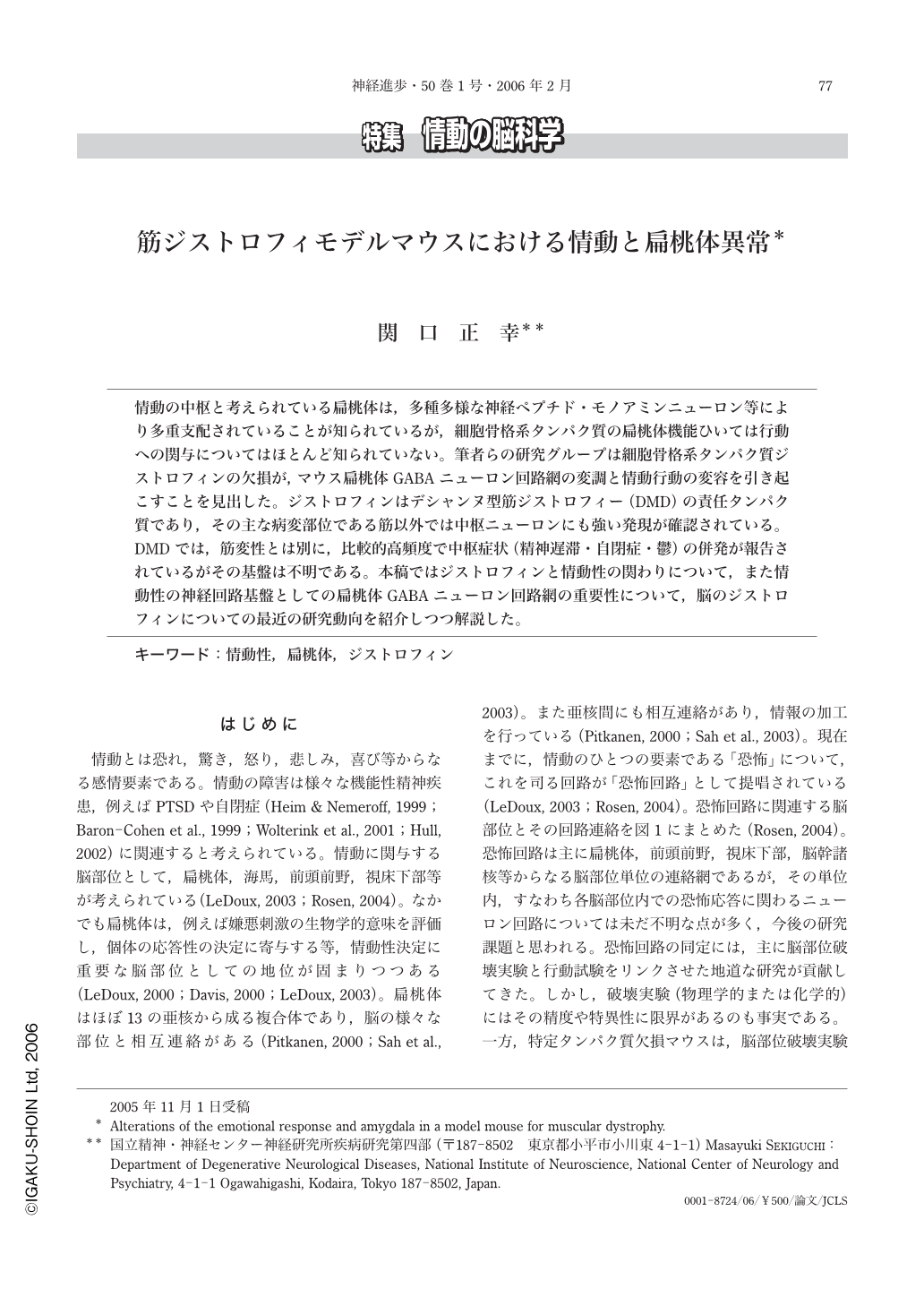Japanese
English
- 有料閲覧
- Abstract 文献概要
- 1ページ目 Look Inside
- 参考文献 Reference
情動の中枢と考えられている扁桃体は,多種多様な神経ペプチド・モノアミンニューロン等により多重支配されていることが知られているが,細胞骨格系タンパク質の扁桃体機能ひいては行動への関与についてはほとんど知られていない。筆者らの研究グループは細胞骨格系タンパク質ジストロフィンの欠損が,マウス扁桃体GABAニューロン回路網の変調と情動行動の変容を引き起こすことを見出した。ジストロフィンはデシャンヌ型筋ジストロフィー(DMD)の責任タンパク質であり,その主な病変部位である筋以外では中枢ニューロンにも強い発現が確認されている。DMDでは,筋変性とは別に,比較的高頻度で中枢症状(精神遅滞・自閉症・鬱)の併発が報告されているがその基盤は不明である。本稿ではジストロフィンと情動性の関わりについて,また情動性の神経回路基盤としての扁桃体GABAニューロン回路網の重要性について,脳のジストロフィンについての最近の研究動向を紹介しつつ解説した。
Dystrophin is a protein responsible for a severe muscle disease Duchenne muscular dystrophy(DMD). This molecule, a huge 427 kDa protein, is also expressed in brain neurons, but its function in the central nervous system(CNS)has been obscure. It is known that some, but not all, DMD patients have accompanying symptoms of CNS disorders such as the cognitive impairment or psychiatric disorders. The bases of the CNS symptoms are unknown. Addressing the CNS function of dystrophin would make the advance on the interpretation of the CNS symptoms accompanying with DMD. In this review, recent findings on dystrophin in the CNS were summarized and our data on animal behaviour and electrophysiology in dystrophin-deficient mice were discussed.

Copyright © 2006, Igaku-Shoin Ltd. All rights reserved.


